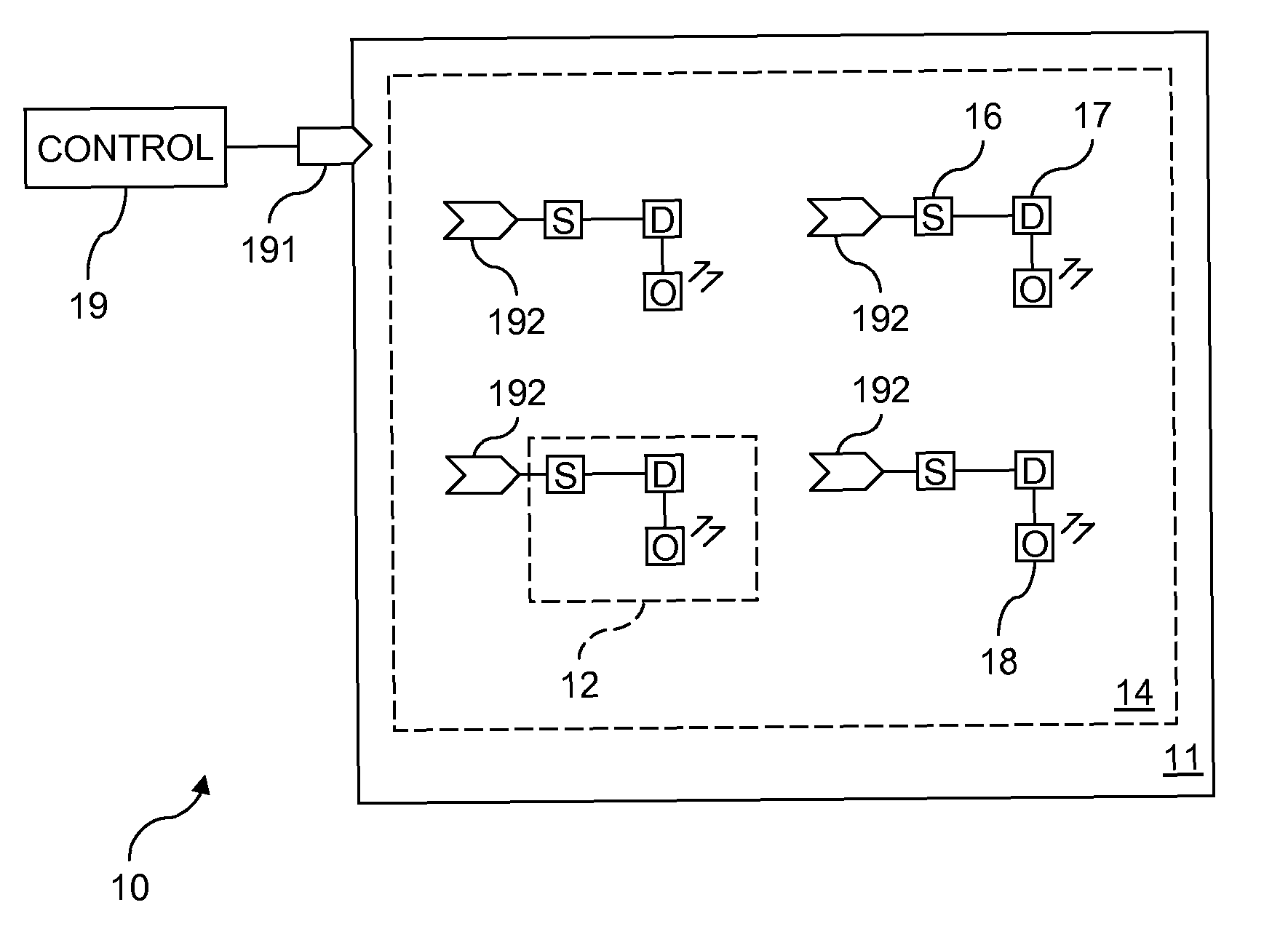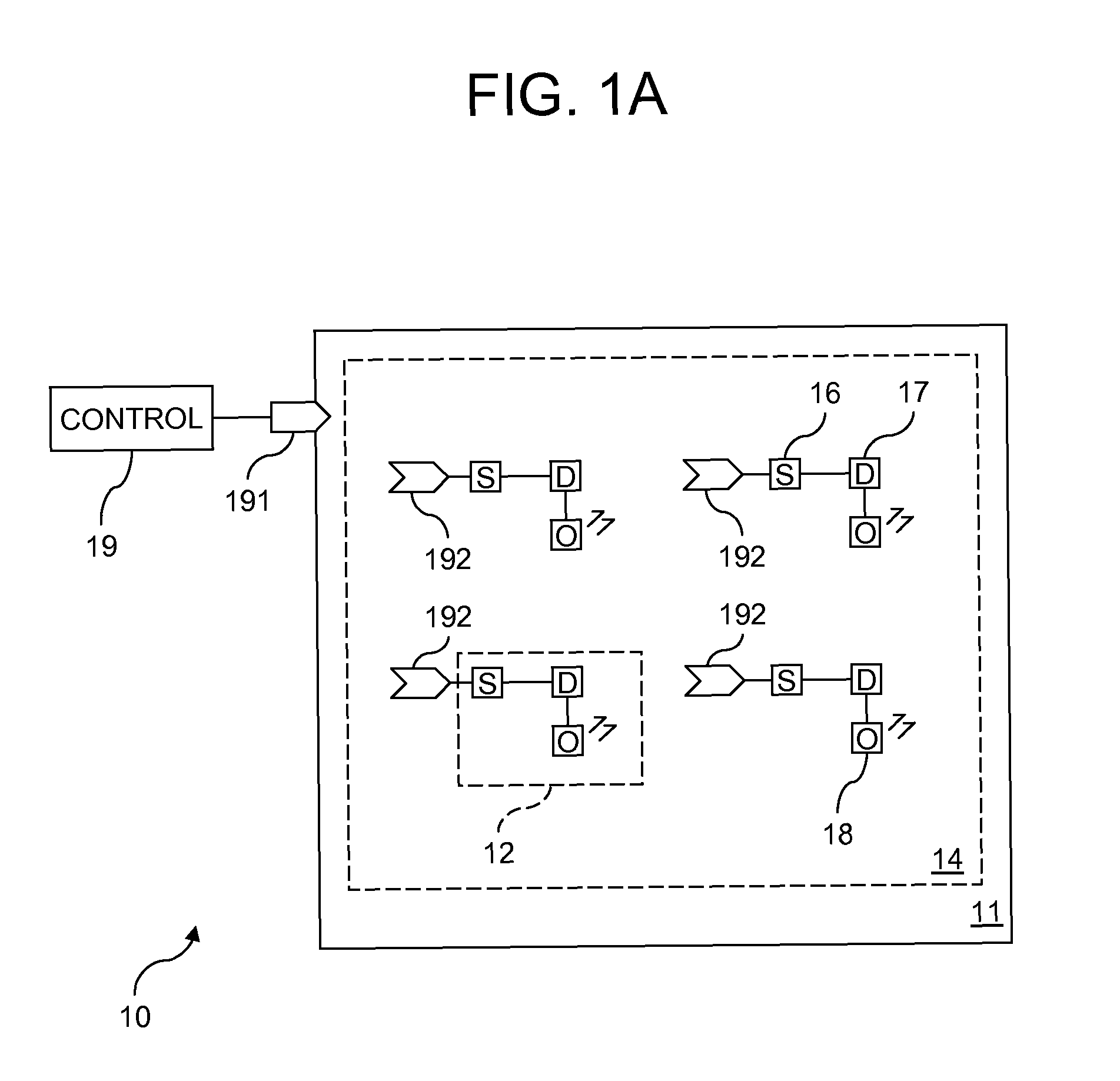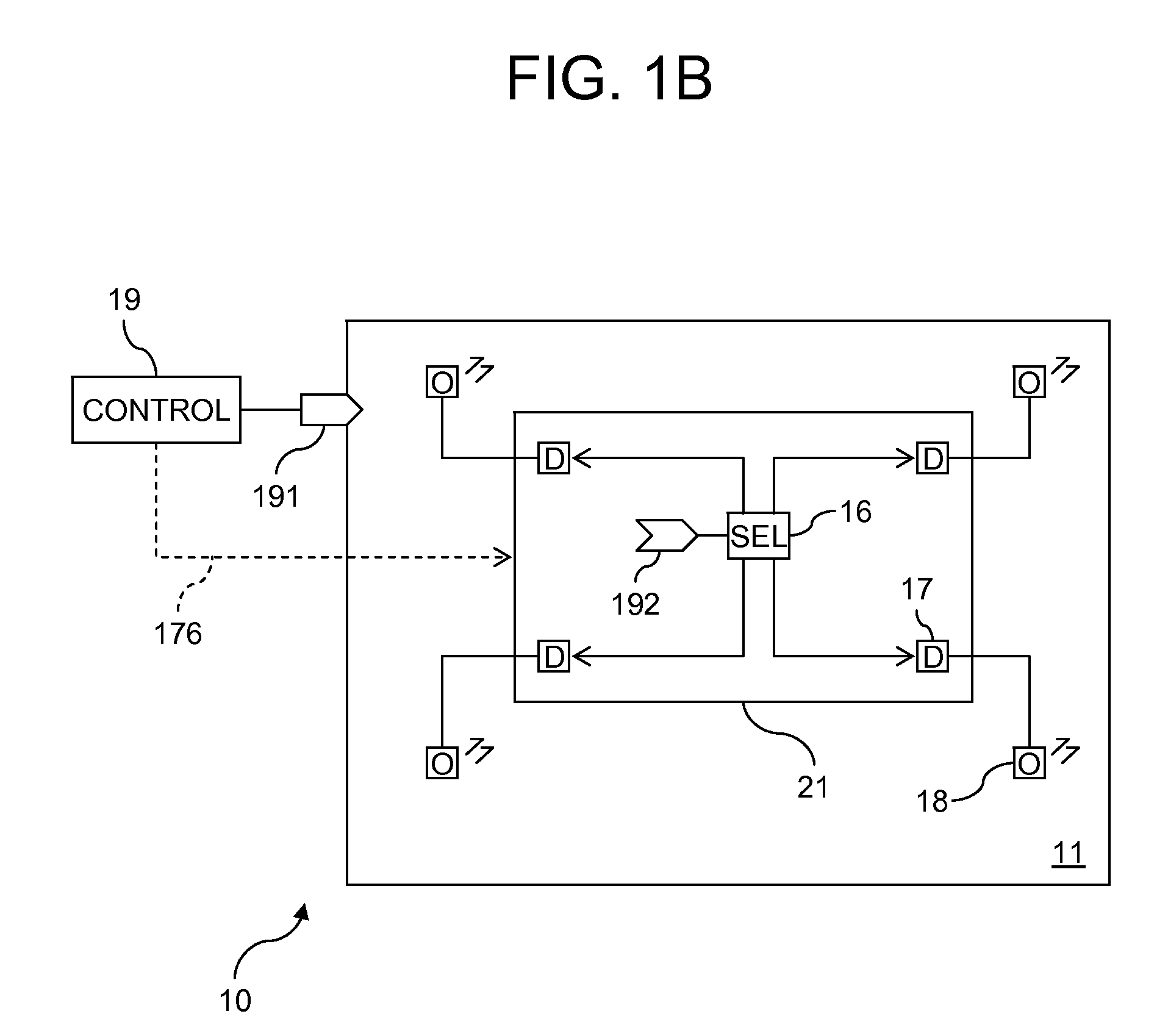Chiplet display with optical control
a chiplet display and optical control technology, applied in the field of display devices, can solve the problems of limiting the timing flexibility of the display, affecting the display performance, and affecting the display quality, so as to reduce the complexity of the display device, reduce the size and cost of the chiplet, and reduce the thickness of the display
- Summary
- Abstract
- Description
- Claims
- Application Information
AI Technical Summary
Benefits of technology
Problems solved by technology
Method used
Image
Examples
Embodiment Construction
[0032]Referring to FIG. 1A, a display device 10 according to an embodiment of the present invention includes a display substrate 11 on which are formed a plurality of subpixels 12. Each subpixel 12 has a selection circuit 16 and a drive circuit 17. Each subpixel 12 also includes a display optical element 18, e.g. an electroluminescent (EL) emitter (light-emitting element). Each display optical element 18 is located in or over display area 14, and is responsive to the drive circuit for providing light. Connections within a subpixel 12 can be made electrically, optically, or by other ways known in the art. A controller 19 provides pixel information to each selection circuit 16 to determine how much light is provided by each subpixel 12.
[0033]The display substrate 11 defines an optical waveguide for transporting light carrying the pixel information. In this application, “light”, when referring to pixel information, includes all electromagnetic radiation (commonly called “radio waves”),...
PUM
 Login to View More
Login to View More Abstract
Description
Claims
Application Information
 Login to View More
Login to View More - R&D
- Intellectual Property
- Life Sciences
- Materials
- Tech Scout
- Unparalleled Data Quality
- Higher Quality Content
- 60% Fewer Hallucinations
Browse by: Latest US Patents, China's latest patents, Technical Efficacy Thesaurus, Application Domain, Technology Topic, Popular Technical Reports.
© 2025 PatSnap. All rights reserved.Legal|Privacy policy|Modern Slavery Act Transparency Statement|Sitemap|About US| Contact US: help@patsnap.com



